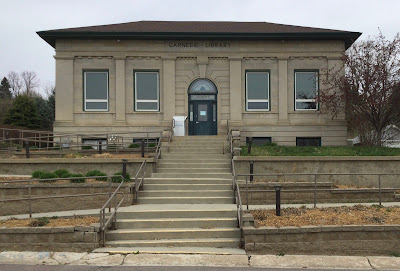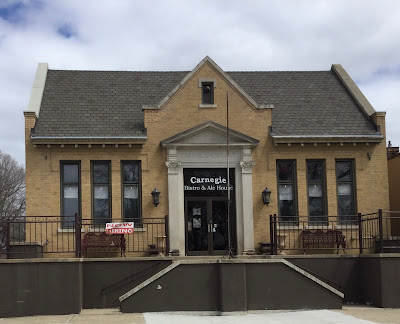There is no denying his intrepid spirit. He was two years out of medical school when he gave in to his wanderlust once again, a condition that has an actual medical term (dromomania), one of many that he sprinkles throughout his narrative. Though the book is subtitled, “A doctor’s journey to the ends of the earth,” he writes much more through the lense of a touring cyclist than a physician. It is a travel book through and through, filed in the travel section of Chicago’s main library rather than the bicycling section, where most of such books end up, of which there are quite a few.
Faber mentions several including those of Dervla Murphy and Ian Hibbell and Thomas Stevens. They are among dozens of books by a wide range of authors from Edward Abbey to Henry Miller listed in his seven-page bibliography. If there had been an index one would have found Jens Voigt and Heinz Stucke, two noted German cyclists, one a Tour de France racer and the other deemed by Guinness to be the most-traveled cyclist in the world, someone who spent fifty-one uninterrupted years bicycling all over the world before returning home. Faber stopped by Stucke’s home towards the end of his ride and devotes nine pages to him, more than most countries.
Mexico earned a mere three paragraphs, though it included one of his many amusing and astute observations. He wrote that Mexico was a long succession of dusty towns, “where men sat with their t-shirts hoisted, airing their paunches like over-heated cars with the hood up.” Another of his noteworthy descriptions was personal. After biking Africa top to bottom at the start of his travels followed by South America bottom to top he was in peak fitness. He could see it in his legs, where “in a certain light the pattern of veins on my calves had a creepy likeness to Che Guevara’s face.”
He’s not the first author to see some sort of design in the veins of a cyclist’s leg. Ned Boulting, another British author, wrote that the veins in the legs of the American racer George Hincapie’s are so prominent that one day they’d be numbered like the switchbacks on L’Alpe d’Huez and given plaques bearing the names of famous domestiques, such as him, who never wore the Yellow Jersey.
Four years into his travels, as his funds diminished, and he began to rely on ramen noodles more and more, which he said had the nutritional value of talcum powder, he began giving talks to schools and publishing articles. By the time he wrote his book he had honed his writing skills, though at times he could go a little too deep into his jar of adjectives, particularly when it came to describing sunsets. Occasionally he’d extract an adjective rarely associated with the setting of the sun—enormous, raucous, extravagant, lingerie-pink, smudge of wine.
The only typographical error I detected in this Simon and Schuster book was sun-related. He wrote that he generally rode from dusk to dawn, meaning dawn to dusk. That fit in with his preference for wild-camping, which one puts off until dusk and the cover of night and obliges one to begin cycling in the early light before one might be discovered. He attaches “rough” and “stealth” to his style of camping along with “wild.”
He gloried in the camping, writing that it defined his journey as much as the cycling. His favorite statistic of his travels, more than the 53,568 miles he pedaled, was that he had camped for free just off the road over one thousand nights, as it “reminds me of the capacity for freedom in a world more dependable than I’d ever imagined.”
Most of his campsites were lost to memory, but a handful stood out as “glorious victories: the Jordanian clifftop, the Californian sea cave, the center of a French rond point, the ramparts of a ruined Ottoman castle.” Unfortunately none of them came up in his narrative and were given a mere belated, bare mention. If I ever cross paths with the good doctor, the first question I’ll have for him is about that French round-about and what it was thick with that provided adequate cover and also what it was like to have vehicles circling around him through the night.
I’ll also thank him for giving the medical term for the sensation of feeling ants crawling on one’s body—formification. He didn’t pass through Brazil, where I suffered the condition numerable times. He experienced it in El Salvador during a quick dash through Central America, where he wrote that he was changing countries more often than underwear.
One aspect of the touring life he overlooked was the joy of getting a shower. Those can be seminal moments when one hasn’t had the opportunity for days. But he or his editors understood that getting a shower becomes a cliche in many cycle touring books, so they elected to purge this book of any mention of showering. Also ending up on the cutting room floor were many of those who had done him good deeds, providing lodging or other acts of kindness, that were a theme of his travels. He would have liked to have credited all of them, but his editors wouldn’t allow it. He apologizes to the overlooked in his acknowledgements.
Nor did he write nearly enough about two of his travel companions, a friend who joined him for eight months during the early part of his travels and through most of Africa, and then his girl friend who joined him for several months starting in Australia and ending in Singapore, when she surprised him with the news that she had had enough and had just bought a one-way ticket to Japan.
He could have sacrificed the four pages he wrote on leprosy or the five pages devoted to a Calais refuge camp for more of his travel experiences. But, of course, it was a near impossible task to reduce over two thousand days on the road to a mere four hundred pages. He easily has enough experiences to mine for another book or two, such as Ted Simon did after the success of his classic “Jupiter’s Travels,” about his around the world motorcycle trip published in 1978.
India figured prominently in both their books. It was there that Simon’s motorcycle was anointed “Jupiter.” Fabes had a similar experience when an Indian policeman told him, “You are like Braveheart in the Mel Gibson movie.” He could have titled his book “The Travels of Braveheart” if he hadn’t opted for a medical-related title.
As all such travel books do, this stirred the urge to be back at it and stirred a steady flow of memories, many long-forgotten. Just as one can lose one’s self when out biking, I’d lose myself flying along reading this book, suddenly realizing an hour or two had passed. After finishing it I discovered a catalog of many of the articles he’d written at his website stephenfabes.com offering some more fine commentary on the touring life.









































